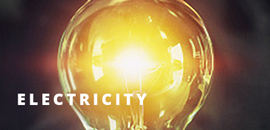PROGRESS REPORT
The University of Texas (UT) at Dallas total Energy Cost Index (S/SF/Yr) went up from $1.44 per square foot to $1.73. After the pandemic, the energy consumption is up by approximately 11 MWh and water by approximately 90 million gallons.
UT has continued the replacement of equipment and systems determined to be beyond their useful life. On new facilities, it continues adopting the latest energy savings and water conservation initiatives. Also, UT has continued -in old buildings- the installation of light fixtures equipped with motion detectors and dimmer switches as well.
UT has continued installing on building equipped with HVAC units with outside air supply systems with reducing air supply devices to control the amount of air intake and improved dehumidification control to improve operation.
UT has dedicated several employees to respond quickly to repair any water leak reported by several communication channels. These employees also manage and care the major water irrigation system to keep it constantly tuned to the weather and time of day.
Since potable water and sewer discharge costs continue to go up, the University has continued an aggressive strategy to counter this increase, working with the cities who supply these services, to make sure the meters are in good working conditions and ensuring the consumption rates are apply correctly.
At the Central Energy Plant, the University has replaced the Burner and Variable Speed Drive (VSD) on Boiler 1. The lighting has been upgraded to LEDs at both Central Energy Plant and Satellite Utility plant.
Throughout Phase one through nine of the Students Apartment Complex, the Housing Operation Group replaced 232 HVAC units. The calculated savings will be approx. $15 a month per unit. The units installed are R-410A that have better efficiency and improved heating and cooling capability.
UT is constantly replacing 10-year-old vehicles by new vehicles equipped with fuel economy engines.
GOALS
As established by the UT-System Board of Regents in November of 2011, UT-Dallas has been an active participant and completed implementing energy savings initiatives to achieve a 5 percent reduction on the Energy Utilization Index (EUI) and a 3 percent-5 percent reduction on Water Utilization Index (WUI) over the 10-year period that concluded this year and will be starting another decade of continued savings.
| Utility | Target Year | Benchmark Year | Percentage Goal |
|---|---|---|---|
| Water | 2022 | 2020 | 0.03 |
| Electricity | 2022 | FY2020 | 0.05 |
| Transportation Fuels | 2022 | 2020 | 0.05 |
| Natural Gas | 2022 | 2020 | 0.05 |
STRATEGY FOR ACHIEVING GOALS
UT continues replacing aging equipment and systems. Also, it is targeting buildings with a history of high energy consumption, monitoring their activities, so that we can optimize the equipment by programming their operation to fit the users need.
UT continues to design new buildings using the latest technology on HVAC & lighting systems, following all codes mandates, as well as, trying to implement building constructions with latest Sustainability certifications & initiatives.
The University continue to install utility meters to track building energy consumption. There have been campus-wide water efficiency opportunity audits. The University has begun consultation with renewable energy consultant to build a comprehensive renewable energy/carbon neutrality strategy, solicit bids, analyze bids and procure as the process advances. Strategy development phase began fiscal 2022.
IMPLEMENTATION SCHEDULE
UT continues installing utility meters to measure and track energy and water consumption, for example, this year, electric meters at Student Services Addition Grab-n-Go, Science Building Grab-n-Go, and telephone towers.
Energy and water conservation projects are implemented when funds are available from any source. All expected savings are quantified and documented.
Auxiliary Enterprises & Student Housing Group are on board following university leadership and implementing their own energy and water savings initiatives.
AGENCY FINANCE STRATEGY
UT evaluated participation in several programs offered by public Institutions such as the State Energy Conservation Office (SECO), who offered to lend lower interest funds thru the LoanSTAR Revolving Loan Program to replace, among other systems, sport fields lighting. Also, it is evaluating participation in ONCOR Electric Delivery Concierge program. This offering pledge to help develop an Energy Efficiency Action plan with the goal to reduce energy costs by 5 percent.
UT is always in the lookout for HVAC and lighting installations projects rebates usually offered by Utility companies. These rebates continue to be used to fund conservation projects, as well as Deferred Maintenance program and LERR money, provided by the university.
EMPLOYEE AWARENESS PLAN
UT encourages student, faculty and staff to participate in the Campus Race to Zero Waste, which is a program designed to eliminate landfill waste and recycling as much as possible.
UT built a pedestrian friendly infrastructure at the same time, it is continuously encouraging the use of bicycles by the staff, faculty and students to move around the campus by installing many bicycle racks. This effort earned the Bicycle Friendly University certification from the League of American Bicyclists.
UT is also, aggressively promoting among the students, faculty and staff the switching off of all light fixtures, HVAC and office equipment when they are not in use. The university publishes various newsletter articles, events and outreach on topics related to energy and water.
UT has introduced the Remote Green Office certification, which recognizes students, faculty and staff sustainability efforts at home.
The University Office of Sustainability is offering the Composting Challenge, which teaches how to Compost at home.






